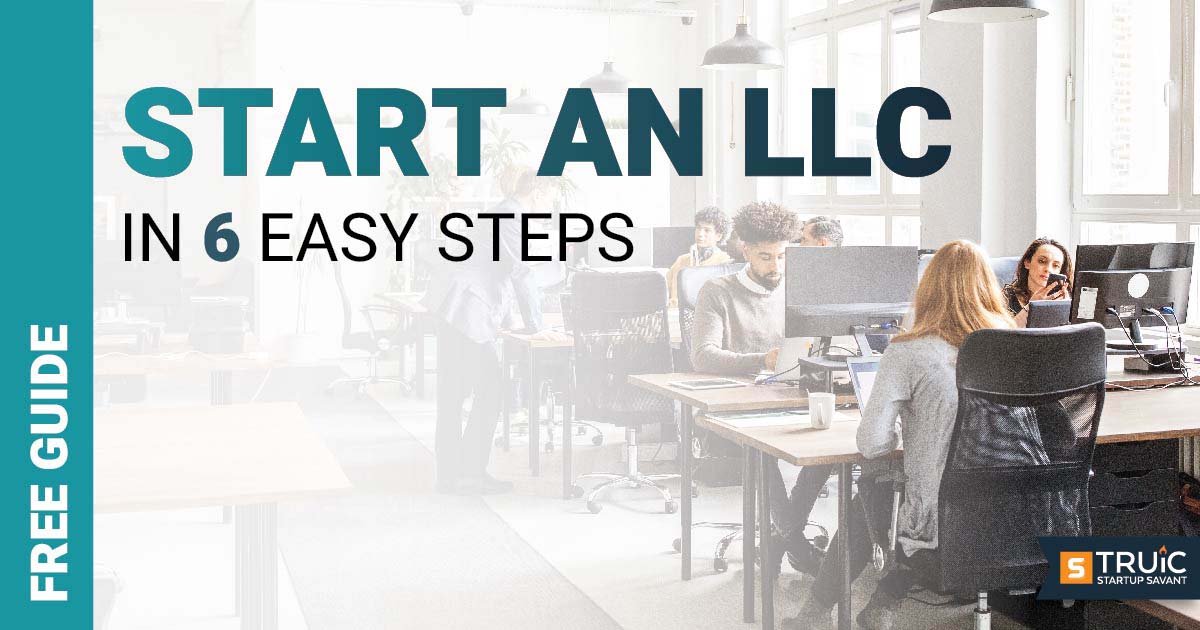The 7 Deadly Startup Sins (& How to Avoid Them)

Last Updated: By TRUiC Team
It’s no secret that launching a startup involves overcoming challenges and learning from failure. However, a few common startup mistakes or “deadly sins” can be catalysts for the downfall of a startup. Knowing about these mistakes is the first step toward ensuring you don’t make them yourself. This guide outlines the most common mistakes made by startup founders and how you can avoid them to protect your business.
Top Startup Mistakes to Avoid
Whether it’s not understanding their customer base or creating partnerships that have a negative impact on their business, startup founders often make these common mistakes. Avoid committing these “deadly sins” of startup entrepreneurship by learning about them in this guide.
Startup Sin #1: Not Knowing Your Customers
Not knowing your customer as a startup can lead to a misalignment between what your company offers and what its potential customers actually need or want. This misalignment can result in wasted resources, missed opportunities, and, ultimately, business failure.
Understanding your customer is crucial to several areas of your business:
- Product Development — Without knowing your customer, it's challenging to develop products or services that effectively solve their problems or meet their needs. This can lead to a lack of product-market fit, meaning your product doesn’t resonate with any significant customer base.
- Marketing and Sales — Understanding your customer is essential for creating effective marketing strategies and sales pitches. If you don't know who you're selling to, it's nearly impossible to communicate the value of your product or service in a way that resonates with your target audience.
- Customer Retention — Knowing your customer also plays a crucial role in customer satisfaction and retention. By understanding their needs, preferences, and pain points, companies can tailor their offerings and customer service to enhance loyalty and reduce churn.
Examples of Companies Doing It Right
Airbnb: In its early days, Airbnb's founders went to New York to meet with their users personally. They stayed with hosts, took professional photos of their listings, and talked to them about what they loved and what could be improved. This deep dive into understanding their customer base helped them tailor their platform to better meet the needs of both hosts and guests, fueling their rapid growth.
Slack: Slack started as an internal tool for a different project, but its founders quickly realized its potential as a standalone product. By closely listening to early adopters and continuously incorporating user feedback, Slack was able to refine its offerings and become the go-to communication platform for teams by emphasizing its user-friendly design and reliability.
Zappos: Online shoe and clothing retailer Zappos became famous for its customer service. By deeply understanding its customers' desire for a risk-free shopping experience, Zappos offered free shipping and a 365-day return policy — revolutionary at the time. This understanding of customer needs and fears helped Zappos to stand out in a crowded market and build a loyal customer base.
These companies demonstrate the importance of knowing your customer well. By staying closely connected with their users, startups can innovate and iterate on their products as well as their marketing and customer service strategies. This’ll thereby enable them to meet the evolving needs of their target market and avoid the "deadly sin" of not knowing your customer.
Startup Sin #2: Not Having a Unique Value Proposition
Without a unique value proposition (UVP), a business can’t offer anything different or better than what’s already available in the market. A UVP clearly explains why a customer should choose your product or service over the competitors. It's essentially what makes your business stand out in a crowded market.
Without a UVP, a startup risks blending into the background. This can lead to difficulty in attracting customers, securing investments, and achieving sustainable growth. Here's where a UVPplays a crucial role:
- Differentiation — In competitive markets, customers have numerous choices. A UVP helps your product or service stand out by highlighting its unique benefits or features.
- Customer Attraction — A clear and compelling UVP can attract customers by directly addressing their specific needs or pain points in a way that competitors don’t.
- Focus and Clarity — Having a UVP helps ensure all aspects of the business — from product development to marketing — remain aligned and focused on delivering the unique value promised to customers.
How to Establish a Unique Value Proposition
Here are several tips to help you create your startup’s UVP:
- Identify customer pain points. Understand the specific problems or needs of your target customer that current offerings don’t fully meet. This can involve conducting market research, surveys, and customer interviews.
- Leverage unique strengths. Look at what your business does exceptionally well or what unique resources you have that your competitors don't. This could be proprietary technology, exclusive partnerships, or specialized expertise.
- Focus on benefits, not features. Customers care about how your product or service can make their lives better or easier. Your UVP should clearly articulate the benefits of your offering in terms of solving a problem or fulfilling a need.
- Prioritize simplicity and clarity. Your UVP should be easy to understand and communicate clearly why your offering is superior. Avoid jargon and focus on conveying the value in simple terms.
- Test and refine. Use customer feedback, “A/B” testing, and market analysis to refine your UVP over time. It should evolve as you gain more insights into your customers and as market conditions change.
Examples of Companies With Unique Value Propositions
Uber: Initially, Uber's UVP was offering a simple, convenient, and reliable way to book a ride with a few taps on a smartphone — a transformational approach to the traditional taxi service model.
Warby Parker: Warby Parker disrupted the eyewear industry with its UVP of high-quality, stylish glasses at a fraction of the cost of designer brands combined with a home try-on program.
Slack: Slack's UVP focused on making team communication simpler, more pleasant, and more productive. This distinguished Slack from traditional email and other communication tools by emphasizing its seamless integration, real-time messaging, and user-friendly design.
By clearly defining and communicating their UVP, startups can significantly increase their chances of success in competitive markets. A strong UVP can not only attract customers, but also build the foundation for a compelling brand identity and long-term customer loyalty.
Startup Sin #3: Focusing on the Wrong Channels
In today's rapidly evolving market, how do you ensure your startup engages customers through the most effective channels?
Investing heavily in channels that don't align with your customers' preferences can drain your resources and jeopardize your venture. Understanding and leveraging the right channels is crucial for conveying your UVP effectively. Here are the types of channels your startup may consider focusing on:
- Direct Channels — This includes digital platforms you control, such as your startup's website, mobile app, or social media profiles. Direct sales through these channels may offer higher margins, but require significant investment and effort to develop and sustain.
- Indirect Channels — These are external platforms through which you reach your target audience, such as marketplaces, ecommerce platforms, or via influencer collaborations. While potentially less profitable per sale due to fees or lower margins, they can offer vast reach with a lower upfront investment.
- A Hybrid Approach — Combining direct and indirect channels can often yield the best results, allowing you to balance control with reach and efficiency.
With these channels in mind, you can use several tactics to reach your target audience. These include:
- Search Engine Optimization (SEO)
- Content Marketing (E.g., a website, YouTube channel, or podcast)
- Social Media Marketing
- Influencer Partnerships
- Ecommerce and Online Marketplaces
- Email Marketing
- Paid Advertising (E.g., Google Ads, Facebook Ads, or LinkedIn advertising)
- Community-Building Efforts
- Affiliate Programs
Experiment with different strategies and measure your interactions, sales, and cash flow to determine the most effective approach for your business. This iterative process may seem challenging, but it’s essential for building a sustainable and efficient operation.
Startup Sin #4: Not Grasping Potential Revenue Streams
If customers are the heart of a business, cash is the blood that flows through it. Before we discuss what you can charge your customers for, it’s important to realize there are more options than you might have initially thought.
Not fully exploring potential revenue streams can significantly limit a startup's growth and adaptability. However, by identifying and leveraging diverse revenue channels, startups can enhance their resilience, unlock growth, and increase their market footprint. Here are several potential revenue streams you may want to consider:
- Expanded Product Offerings — Consider adding complementary products or services that align with your existing offerings. If you run a software company, for example, you could offer consulting services for implementation or customization so you provide both a product and a service as revenue streams.
- Subscription Models — Transform one-time sales into recurring revenue by offering subscription services. This model works well for everything from software to physical goods like monthly subscription boxes.
- Licensing and Royalties — If you've created a unique product, technology, or brand, licensing it to other companies can open up new revenue streams. For example, a startup with innovative software algorithms might license them to larger corporations for use in their products.
- Affiliate Marketing — You also could partner with other businesses to promote their products or services for a commission. This can be particularly effective if you have a strong online presence or a dedicated audience that trusts your recommendations.
- Online Courses and Webinars — Leverage your expertise by creating and selling online courses or hosting paid webinars. This is especially relevant for startups in the education technology sector or those with a strong knowledge base in a specific niche.
- Freemium Models — This involves offering a basic version of your product or service for free while charging for premium features. It can attract a large user base — some of whom may convert to paying customers for advanced functionalities.
By diversifying their revenue streams, startups can secure their financial footing as well as enhance their market adaptability and innovation capacity. Exploring and integrating these additional revenue channels can help startups ensure their long-term sustainability and growth.
Startup Sin #5: Not Leveraging Key Resources
Failing to identify and leverage key resources can directly impact a startup’s ability to execute its business model, innovate, and scale. Key resources include the assets critical for a company's success, such as what’s needed to create value for customers, reach target markets, maintain relationships with customer segments, and earn revenue.
Neglecting these resources can lead to missed opportunities, inefficient operations, and an inability to respond effectively to competition or market demands — ultimately threatening the startup's survival and growth.
To avoid this startup mistake, make sure you don’t overlook these key resources:
- Human Resources — Talented and skilled personnel are fundamental for innovation, execution, and scaling. This includes founders, engineers, salespeople, and other specialists who contribute to the development and growth of the startup.
- Financial Resources — Access to capital (e.g., seed funding, venture capital, revenue streams) enables startups to scale, invest in product development, and sustain operations until they become profitable.
- Intellectual Resources — Intellectual property (IP), proprietary knowledge, patents, and trademarks protect innovations and provide a competitive edge.
- Physical Resources — Essential physical assets (e.g., equipment, manufacturing facilities, or office space) support operational activities and product development.
- Network Resources — Relationships with partners, suppliers, customers, and advisors can provide strategic advantages, access to markets, and valuable insights into industry trends and customer needs.
- Brand Identity — A strong brand can differentiate a startup in the marketplace, build customer loyalty, and enhance its value proposition.
Startup Sin #6: Spending Time on the Wrong Activities
When startups spend time on the wrong activities, they can waste resources, miss opportunities, and, potentially, cause the failure of the business. In the early stages of a startup, time and resources are incredibly scarce. That makes it crucial to focus on activities that directly contribute to validating the business model, acquiring customers, and achieving a product-market fit. Misallocating energy and time can slow down progress, drain financial resources, and diminish a startup's ability to respond to competitive pressures or market changes.
Common areas where founders misplace their energy and time include:
- Overemphasizing product perfection
- Overengineering solutions instead of developing a minimum viable product (MVP)
- Micromanaging instead of delegating
- Chasing investors instead of customers
- Networking without focus or end goals in mind
Fortunately, founders can leverage the following tips to avoid dedicating time to tasks that aren’t furthering the success of their startup:
- Set clear priorities. Regularly evaluate and prioritize tasks based on their impact on your key business objectives.
- Adopt the lean startup approach. Embrace the lean startup methodology by building MVPs, testing hypotheses quickly, and iterating based on user feedback.
- Focus on effective delegation. Identify tasks you can delegate and invest in training team members to take on these responsibilities.
- Take a customer-centric focus. Allocate significant time to engaging with customers, understanding their needs, and refining your product or service accordingly.
- Prioritize strategic networking. Attend networking events with specific goals, such as meeting potential mentors, partners, or customers.
- Practice financial discipline. Implement strict budgeting and cash flow monitoring practices to ensure your startup’s financial health and sustainability.
By focusing on the right activities, startups can enhance their chances of success, optimize the use of their limited resources, and more effectively navigate the challenges of establishing and growing a new business.
Startup Sin #7: Making the Wrong Partnerships (or No Partnerships)
Building the wrong partnerships — or failing to establish any partnerships at all — can be a critical mistake for several reasons. Partnerships are often a key strategy for startups to accelerate their growth, extend their capabilities, and gain access to new markets or resources. Not leveraging these relationships effectively or aligning with the wrong partners can have severe consequences that undermine the startup's potential for success.
To avoid building partnerships that may negatively impact your business, follow these tips:
- Prioritize strategic alignment. Choose partners with goals, values, and market interests that align with your startup. This’ll ensure the partnership strategically complements your business objectives.
- Do your due diligence. Conduct thorough due diligence to understand potential partners' financial health, reputation, and business practices.
- Create clear agreements. Establish clear, legally binding agreements that outline roles, responsibilities, contributions, and mechanisms for conflict resolution.
- Demonstrate communication and collaboration. Maintain open lines of communication and foster a collaborative relationship to ensure ongoing alignment and adaptability.
- Conduct performance monitoring. Regularly review the partnership's performance against agreed-upon metrics to ensure it’s delivering the expected value and make adjustments, as necessary.


